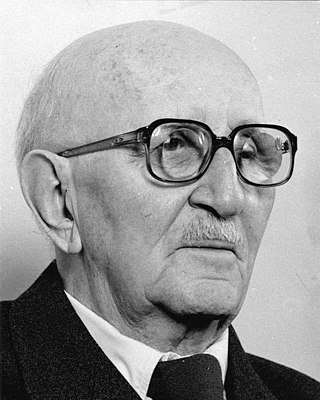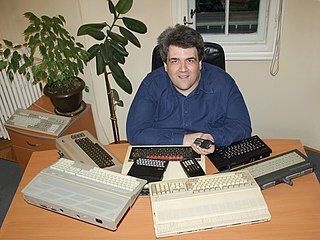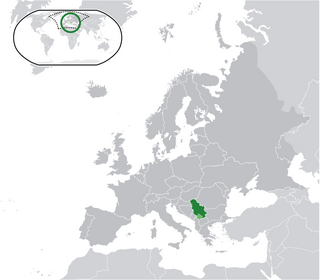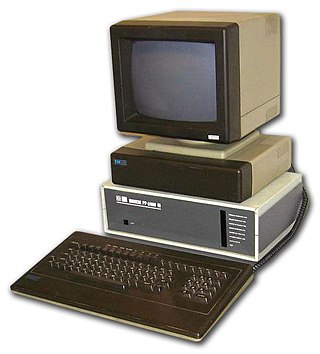
The University of Belgrade is a public research university in Belgrade, Serbia. It is the oldest and largest modern university in Serbia.

The Galaksija was a build-it-yourself computer designed by Voja Antonić. It was featured in the special edition Računari u vašoj kući of a popular eponymous science magazine, published late December 1983 in Belgrade, Yugoslavia. Kits were available but not required as it could be built entirely out of standard off-the-shelf parts. It was later also available in complete form.

Vaso Čubrilović was a Bosnian Serb scholar and politician. As a teenager, he joined the South Slav student movement known as Young Bosnia and was involved in the conspiracy to assassinate Archduke Franz Ferdinand of Austria on 28 June 1914. His brother Veljko was also involved in the plot. Čubrilović was convicted of treason by the Austro-Hungarian authorities and given a sixteen-year sentence; his brother was sentenced to death and executed. Čubrilović was released from prison at war's end and studied history at the universities of Zagreb and Belgrade. In 1937, he delivered a lecture to the Serbian Cultural Club in which he advocated the expulsion of the Albanians from Yugoslavia. Two years later, he became a history professor at the University of Belgrade. Following the Axis invasion of Yugoslavia in April 1941, Čubrilović was arrested by the Germans and sent to the Banjica concentration camp, where he remained imprisoned for much of the war.

Dejan Ristanović, is a well known Serbian writer and computer publicist.

Regulation of the telephone numbers in Serbia is under the responsibility of the Regulatory Agency of Electronic Communication and Mail Services (RATEL), independent regulatory authority. The country calling code of Serbia is +381. The country has an open telephone numbering plan, with most numbers consisting of a 2- or 3-digit calling code and a 6-7 digits of customer number.

CER model 10 was a vacuum tube, transistor and electronic relay based computer developed at IBK-Vinča and the Mihajlo Pupin Institute (Belgrade) in 1960. It was the first digital computer developed in SFR Yugoslavia, and in Southern Europe.

CER model 22 is a transistor based computer developed by Mihajlo Pupin Institute (Serbia) in 1967-1968. It was originally intended for banking applications and was used for data processing and management planning in banks, trade and utility companies in Belgrade. Three CER-22 computers were purchased by Beobanka, Jugopetrol and BVK–Belgrade companies..
CER was a series of early computers developed by Mihajlo Pupin Institute in Yugoslavia in the 1960s and 1970s.

Mihajlo Pupin Institute is an institute based in Belgrade, Serbia. It is named after Mihajlo Idvorski Pupin and is part of the University of Belgrade.

The Socialist Federal Republic of Yugoslavia (SFRY) was a socialist country that existed in the second half of the 20th century. Being socialist meant that strict technology import rules and regulations shaped the development of computer history in the country, unlike in the Western world. However, since it was a non-aligned country, it had no ties to the Soviet Bloc either. One of the major ideas contributing to the development of any technology in SFRY was the apparent need to be independent of foreign suppliers for spare parts, fueling domestic computer development.

The TIM-100 was a PTT teller microcomputer developed by Mihajlo Pupin Institute (Serbia) in 1985, part of the TIM series of microcomputers.

CER model 203 is an early digital computer developed by Mihajlo Pupin Institute (Serbia) in 1971. It was designed to process data of medium-sized businesses:

TIM-001 was an application development microcomputer developed by Mihajlo Pupin Institute (Serbia) in 1983/84.

Belville is a residential area within Block 67 in New Belgrade. It is the first officially planned neighbourhood of Belgrade in 12 years; the project was started in 2006, and the apartments were used by participants of the 2009 Summer Universiade in Belgrade. The complex consists of 14 residential buildings and 2 commercial buildings, and more than 300 stores, a sales pavilion and a large parking space, covering a total area of 13.8 hectares. The construction investor is the company "Block 67 Associates".

Rondebosch Boys' Preparatory School is a state primary school in Rondebosch, a suburb of Cape Town, South Africa. It was detached from Rondebosch Boys' High School and established as a separate school in 1929.

The University of Belgrade School of Electrical Engineering also known as Faculty of Electrical Engineering is a constituent body of the University of Belgrade. The word Faculty in Europe stands for an academic institution, the sub-unit inside the university.

The ATLAS-TIM AT 32 was the process computer developed by Mihajlo Pupin Institute in Belgrade in the 1980s. The designers were Dr Vukasin Masnikosa, Dr Bozidar Levi, Mr Milenko Nikolic and their associates. Professor Bozidar Levi with 2 coauthors got the Nikola Tesla award for his ATLAS design in 1988.

TIM-600 was an important PC computer system in the TIM series of microcomputers from Mihajlo Pupin Institute-Belgrade, developed from 1987 to 1988. It was based on the Intel microprocessor types 80386 and 80387. It has word-length of 32 bits, basic cycle time of 20 MHz and operating system Unix V.3. The TIM-600 computer system was presented at the Munich International Computer Exhibition in September 1988.

CER-11 was a portable digital military computer, developed at Institute Mihajlo Pupin, located in Serbia, in a period between 1965 and 1966.
Vuk is a computer prototype designed by a group of students from Leskovac in SFRY. It was supposed to be a multipurpose educational computer. The development started in 1984 and in 1988 about ten prototypes were produced. Although the design received awards, the Yugoslav industry was not interested, so the computer never reached the production phase.



















